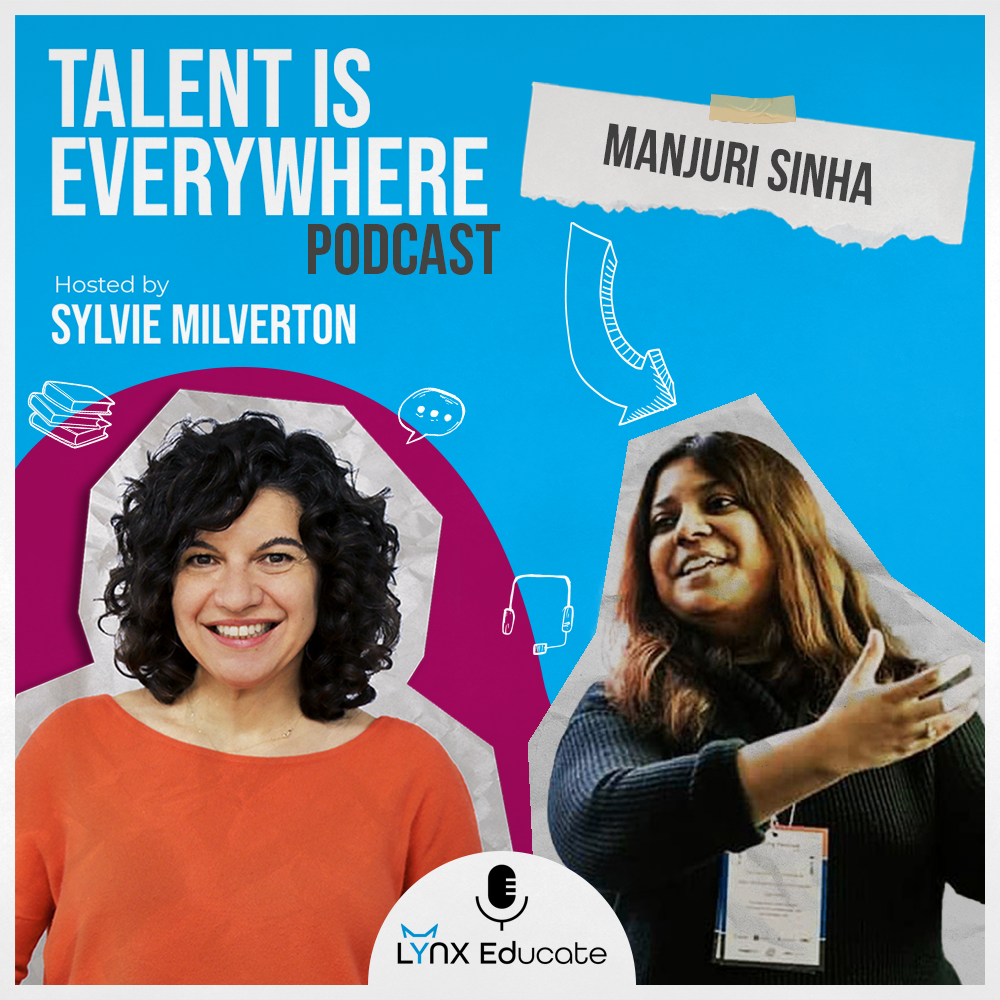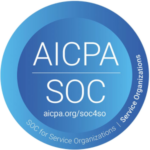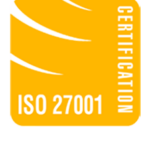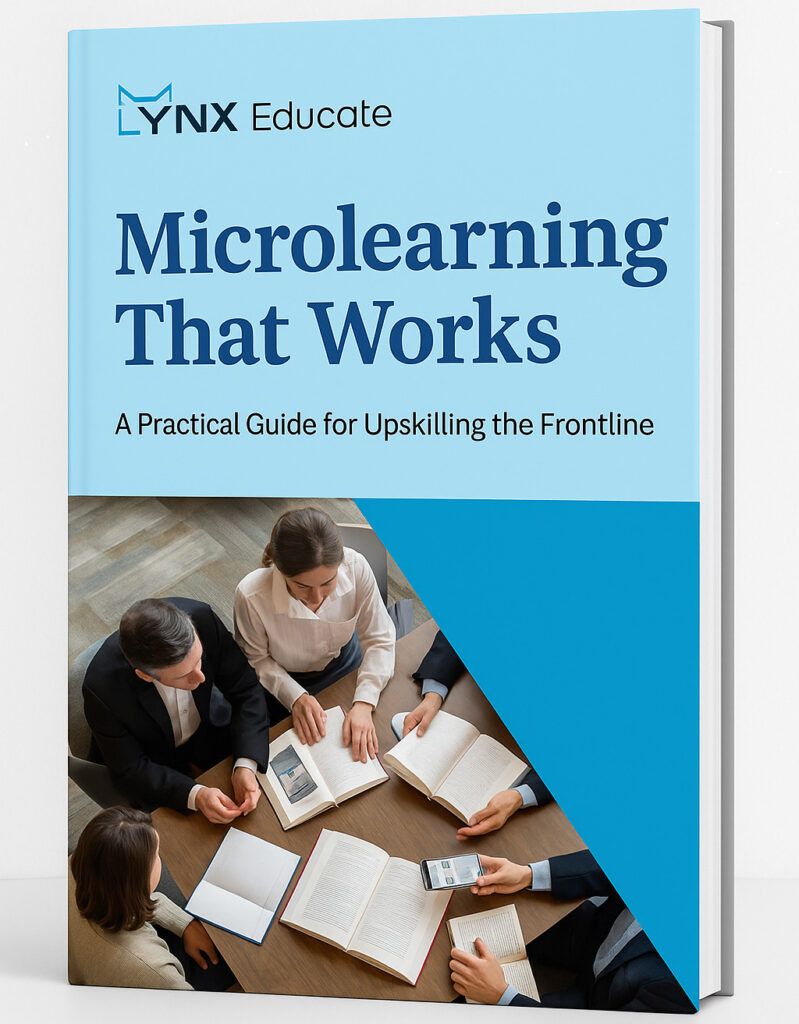#8: Manjuri Sinha - Season 1, Episode 8 - Talent is Everywhere!
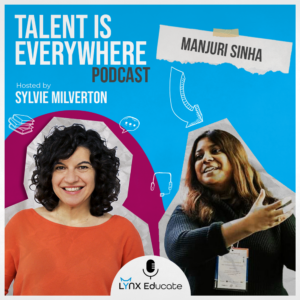
About the Episode:
In this episode of “Talent is Everywhere,” Sylvie Milverton, CEO of Lynx Educate, interviews Manjuri Sinha, VP of Talent Success and DEI at OLX.
Manjuri shares insights into OLX’s HR transformation journey, focusing on boosting engagement and performance amidst challenges like the pandemic and tech industry shifts.
Key initiatives include bringing HR functions under one umbrella, prioritizing manager capability development, and leveraging AI coaching to drive cultural change.
Transcript
Manjuri:
At that point in time. If you asked anyone to know. What does a good manager look like? What is a good manager for OLX? Every manager might have a very different view.
Sylvie:
Hi, I’m Sylvie Milverton, CEO of Lynx Educate. This is “Talent is Everywhere”. We’re here to talk about how to keep talent and how to develop talent in order to build a strong business. We’ll interview leaders to hear their best experiences of how they invested in people.
Today we’re speaking with Manjuri Sinha, who is the VP of Talent Success and DEI at OLX, which is a company building sustainable marketplaces where millions of people buy and sell cars, find houses, get jobs. Headquartered in Amsterdam with around 3000 employees and prior to oil acts, she is also an executive committee member of the HIGHER Community on the list of Talent100. So we’re super happy to have you with us today.
Manjuri:
Thank you so much, Sylvie. Thank you. I’m really excited to be here.
Sylvie:
Great. And so, as per our format, we’re gonna, you know, talk about really a case study. And when we’re planning this, we’re talking about how you really like the work you’ve done at OLX in your role of bringing together all the HR functions under one umbrella, really focusing on boosting engagement to drive performance, especially in a cost-conscious way, which is, you know, the key to these times. So maybe you can just start by giving us the business context, for this initiative and what problem you are trying to solve.
Manjuri:
Absolutely. and I think just to just to add to what you said, Sylvie, it’s bringing all talent together. Not all the HR functions together. So just to clarify on that, the business context, a couple of things in the background, number one was overall an HR transformation that the, that the organization was one, on on the journey already. And this was kicked off by our previous CHRO.
And, as a part of that, we were looking at, different models and different systemic approach to HR, as Josh calls it, last, last year, along the lines of this transformation, we also looked at the business context when we were, decoupling from one of our investment areas in the autos world and different, continents. That’s and that’s where we also looked at some silver linings and opportunity of, breaking the silos. As such, the talent has. Right.
So in in our previous setup and in a lot of organizations, we have silos of talent acquisition, talent development and engagement and employee experience, and DEI and this was the opportunity that we took to see, hey, now that we are looking at rightsizing ourselves, how do we go about it? And what would be the best model for for the business context? And at that point of time, one of the challenges that we were facing was, coming out of, you know, the pandemic impact as well as the tech winter, the impact of the, Russia, Ukraine war.
We had our challenges like any other tech organization, and we had gone through our share of, layoffs, big because of our strategic business decision, also decoupling with certain teams, etc., and engagement, henceforth was really low for, for the organization. One of the biggest challenges for the business was also to get this engagement up. When. Sure. Was that engagement, when engagement is up, business performance is up, productivity is up. And that was a business challenge to solve, to, keeping that in the forefront. That’s when we looked at how can we shape the model for talent to be more seamless and, be fast in releasing and designing talent products for the organization.
And that’s when the decision of putting talent together under one leader and one, team was kind of, taken last year.
Sylvie:
Interesting. And what and so we as an organization, are you always measuring engagement, like did you see, especially on the confluence of all these events, that it had gone down, or was it like a feeling of realizing like, okay, we’ve done all these initiatives.We we see it. We need to be mindful of this.
Manjuri:
We have been, tracking engagements will be, so, to last year the, tracking was done on a, on a regular basis that was yearly. So March to March is something that we do. We would look at our engagement surveys all across the organization on different, parameters along the lines of the Gallup questions, etc..
And that’s where we looked at the indication of the drop. And, you know, it went down for the previous year’s engagement. So being spent, we used to do a slight bit of a spot check in the month of October. But then we also realized this was an interesting bit that we realized last year in our organization and in the world that we live in, things are changing so fast that the yearly engagement survey actually doesn’t give the pulse of the employee.
So that’s when we also decided to move from, a yearly, engagement survey to something called as many pulses. And we started doing shop surveys every two months to get the pulse of the employees. So, for example, if we had a particular initiative or a communication drive that happened in the month of May or June, then we can actually have some targeted questions there to assess the pulse of the employees as well. And in so doing also enables our managers, because then managers can get really close to their teams and look at what they can action with, their teams as well to move that engagement up.
Sylvie:
Yeah, that makes sense. And actually, that leads me to the next thing I want to talk about, which was your manager capability framework, that you said that as you were like launching these initiatives and bringing everything together, where you wanted to start was managers. So we know that when people make decisions and if you like your job, it’s obviously if you have a good manager. But how did you think about this framework? Like why was it important to start there and how did you decide what good looks like?
Manjuri:
Very good question. Sylvia, I think number one is necessity is the mother of invention and this was this was a necessity when I was talking about the business challenges, such an entity was, looking at engagement and taking engagement up. The second one was, where do we double down? What do we do? And at that point of time, we didn’t have the world’s resources. So we had to really broadly prioritize on where can we double down, going back to some data, from Gallup, that say the 70% of employees engagement can be, categorized or can be, related to the manager.
So, you know, the manager actually has a huge impact on, the employees engagement. So that’s why we thought, let’s work on this bit. and it’s basics, but we haven’t gone to basics or gone back to hygiene for a number of years. Right. So we had a lot of programs around a lot of things, but not really enabled the core, which is the which is the manager that has connected with the other, the employees.
So with this we decided to okay, let’s look at launching, a capability framework that starts very it sounds very basic. going back to the drawing board, even if you ask any at that point of time, if you ask anyone in OLX, what does a good manager look like? What is a good manager for? Well, it’s every manager might have a very different view.
So we had to first of all, go back to the drawing board and understand that for ourselves. And thankfully, there was work done in the employee experience team with, having some focus groups around with managers as well on what is their perception with managers, what is their perception? And all that work was narrowed down to real, very simple terms on the people, people managers side of looking at the three, three pillar model of career and coach, and looking and kind of guiding them on, on that particular, aspect as well.
So we looked at this and then we said, okay, this is how what good looks like. And also drilling it down even there we said if you are, you know, if this is the behavior that you exemplify, how should your team see it, what should be a team see and how should they feel as well. So drilling down of these, these three pillars as well with the, with the managers, that’s how we define what that looks like for them.
Sylvie:
And how did I’m always into very like practical things. So like how did you implement I mean was it like we make like PowerPoint presentations. We bring people into groups. We put it on notion like, how did you share?
Manjuri:
Number one is we looked at putting all the resources together. So we looked at number one as, as I mentioned, defining what a good manager for OLX is. So that’s the first message that this is, this this this is what good look, what good looks like for OLX.
The second one is ensuring that we can make it sit where it is supposed to be. So that’s the accountability part, ensuring that we actually added to the goals of every, every people manager. So it did sit with a 5 to 10% weightage in everybody’s goal sheet.
The third is ensuring that managers and their managers are aware of what kind of data points that we look at, right in that. So if we talk about retention rate, if you talk about goal setting, IDP, individual development plans, etc.. So that was that was a third thing.
The fourth is looking at communication and one way of communication. And last is enablement. Now how did we drive this? Number one is we did not. We really didn’t want this to be an initiative that is only driven by HR. if it comes out to be as any other product from HR, the adoption wouldn’t be and wouldn’t have been as we saw. So we wanted a leadership to drive it.
And that’s why we launched it with the communication from our, CEO himself at that particular point of time. How did we then go about settling this with the managers is, doing some roadshows again with the leadership there. So we would spend about 15 minutes with a PowerPoint presentation and talking through the context and then actually have a fireside chat with one of our C-Suite, members.
And we would ensure and, you know, they also did it voluntarily complete, they completed some of the trainings themselves before that session. So they would have gone through 70% of the manager capability framework. And then we would talk to them about their experiences, why do they think it’s important, etc. So that’s how we drove these virtual roadshows, about 3 or 4 of them from different functions, and then started settling this down and then saying, hey, now we are tracking the completion of the framework, completion of the training modules, how are you interacting with the newsletters, etc., etc. So that’s our first launch initiative that we did, in the month of July and August last year.
Sylvie:
Wow. And well, I have a few questions, but I in terms of the enablement activities. So you did roadshows and workshops. You mentioned also you did some AI coaching and how have you seen AI mean, AI everywhere how have you seen that implemented in your company.
Manjuri:
We started from I mean I would say it was first, so it was real basics, basics of, of what a people manager needs to know. again, if you ask managers, how do we hire an engineer in OLX, they would have different answers, they wouldn’t really know. So number one is going back to the basics on really laying down how is hiring done and how is onboarding done in OLX?
What is B2B, performance appraisals and what is the reward per policy, etc. So that’s one area which was like a learning path given to the manager. The second was something where we looked at enabling the managers across certain other training programs, be it situation leadership, adaptive leadership, etc. again, some digital learning support that we provided.
The third aspect was experimentation with our AI coach. So our parent company has worked on and come up with a NLM-based model. It’s called process AI assistant. And one of our team members at that point of time, Alexandra, actually thought about using that and coming up with a use case for an AI coach for managers. We ran a pilot for a month. Humungous adoption. Great feedback also for the for the AI coach. A couple of things that they said.
Number one, you know, because it’s one on one. So they’re not apprehensive asking any question. They know that it’s confidential. So, you know, the, the you sometimes if I think do I sound stupid asking this question and I don’t because it’s a bot. Right. So I know I don’t really care about that. second it’s available any time, so I don’t have to wait for my, HR business partner to really be up and then give me a response. And I can ask the question any time, and I can further drill down as much as I want. And there’s this, knowledge out there.
So I think these couple of feedback was really, really good. and people started taking to it immediately, the one to be launched. So after the trial, after that, practice period, then we went for a complete, manager-wide launch. We also did some, roadshows with our leaders, but I’m a little bit more excited about this. Initially, we thought it will be a challenge, but when we saw the data coming from the usage of the assistant as a coach, we actually saw our commercial managers using it more than our tech managers were using it.
And earlier we thought that would be a challenge. But, it was not. They really took to, very well to it. And now this year, our plan is to move towards an AI coach 2.0 where we can drill some, of our, like I said, you know, we have to some training programs, but whatever data is available in these training programs, we also wanted to collect OLX specific information into the sport so we can have more specific, responses going to the managers as well.
Sylvie:
Yeah, that’s just fascinating because, you know, we always wonder, how are we going to feel about AI coaching? I don’t know if you saw like in The Guardian, they did some articles about AI, almost like psychologists, and the advantage that, you know, you wake up at two in the morning just feeling a pit in your stomach and you can connect, you know, it’s a it’s a robot.
It’s still really solves the problem of having someone to talk to in the moment that you, need to. And how have you seen. So after, like, you know, launching this whole thing, you’ve done it with managers. You started to ask, you know, ladder down into the teams. How have you seen engagement evolve and change and have you even from like a subjective feeling from your seat if sense like a change in the culture and the mood,
Manjuri:
I think, yes. so numbers numbers, you kind of really speak for itself, through the process and like I shared that we have these minibuses. We’ve seen a consistent increase in engagement. So it’s not something that just happened overnight, consistent in increase in engagement to the to those many pulses. And in March when we went for the big engagement.
So maybe saw an uptake of plus 11 on on our Europe engagement as such. And when we look at the manager, my manager entire I bucket that is actually beyond the industry benchmark, it’s a it’s about 90. And overall, even our engagement results are beyond the industry benchmark. by 4, as per our platform culture. They, they, kind of conduct the survey. And it’s interesting because when they came back with feedback, they said most of the organizations in this market have actually gone down or dipped in their engagement.
And you’ve, stood out, as a positive outlier. They’ve been close to the initiatives that we’ve had. And this particular part of manager capability has, really, played a very, very big role in getting these engagement levels up in the organization, for sure.
Sylvie:
Yeah. yeah. That’s amazing, amazing results. And we know. Yeah. Focusing on managers and investing, you know, in people makes like all, makes all the difference how do you feel about, like, the role of HR in an organization? Like, one thing that always frustrates me is that, I mean, it’s a good thing and a bad thing, but you know, that we need leadership.
If an initiative comes from human resources like it, doesn’t it take it in the serious way? Where, of course, you know, if your organization says are people are at the heart of what we do, I don’t know, how do you see things changing and how do you, as a HR leader, like, adapt to this frustration that you’re doing? You know, God’s work and yet you need a better?
Manjuri:
I love that what we have, we are doing God’s work. I think it’s a it’s, you know, it’s, it’s interestingly a little bit of a field where we haven’t really created the knowledge is when H.R., H.R. is still seen as a police organization for most of the lot. Right. So whenever something comes from, from HR, it’s always seen with a little bit of about a little bit about what data are they collecting? Are they going to make any decisions based on this data. And unfortunately, the last year and a half is not helped us in this cause as well as a, you know, as a as a community.
So I think more and more once we move towards the initiatives where we are very closely working with business and they see the partnership here, and that’s when, you know, you have the apprehensions and the guards down, from people. I think that’s that’s something that we’ll have to work more on talking more about now. It’s, it’s it’s a great space. I mean, you have, speakers like George Wallace and Nola Schmidt and so and so forth really talking on innovation in HR. One of those days when we only talk about HR laying down policies and, you know, just doing your performance management and so and so forth, it’s much more than that. It’s owners of cultures, etc..
Today we are sharing our goals with our tech leaders in the organization. Right? We there’s organizations where we are sitting in the driver’s seat when we adopt modern AI transformations. That’s the view that we need to give our employees as well, externally and internally, and then probably get that Phoenix feeling of revival as a trust factor from, from our, employees in the organization.
Sylvie:
Yeah. And actually, as you say that, when I think of like, organizations really adopting AI in their day to day, like your AI coach is amazing. And it’s a way, you know, it’s almost like HR is role to help put these tools into the day to day of, of employees. The some of them, of course, it’s how to do your job, but it’s also how does AI just become part of our normal work. And in fact, the tech team is not going to do that because they’re building the product. You know, the sales team isn’t going to do really. It has to be our HR partners to change that culture.
Manjuri:
Absolutely. And it’s it’s it’s all about the change of mind shift today. I mean, it’s a my the mindset change of, number one, demystifying this world, right? Yeah. There are there’s this Schrodinger’s cat feeling of, will I come and take all our jobs on one hand? So demystifying the whole fact, what is Genie? What are lamps, right. How do they take part in your workflows today? How can it they actually help you amplify, augment and increase efficiency rather than taking people’s jobs, etc.?
So I think this whole demystification is something that HR and talent steps in and takes the charge for the organization.
Sylvie:
That’s amazing. And so then just to finish up, maybe you could tell us, like what’s on your strategic horizon for the rest of this year and going into 2025?
Manjuri:
A lot of exciting things. And since we were talking about the gen AI aspect, and that’s that’s one of the things that I’m really looking forward to. And that’s also something that I share with the with the CTO of the organization this year is getting, our organization on the on the gen AI journey.
So starting with leaders, ensuring that the leaders also play a role model, behavior on adopting trialing Gen I and getting them into workflows. But for the rest of the organization to come closer. For example, we have technology as a part of the organization. We also have business and promotion for them to come closer. Understand how what does gen AI do?
How do we use it today for our customers, and how can we actually start using it in our regular workflows and in the days to come? So this definitely is one of the strategic bits on top of this, because there’s a lot of, you know, a lot of our I wouldn’t say that I wouldn’t take our jobs, but it will, automate certain parts of our jobs and it will definitely take on certain skills that can be automated when that happens.
What becomes very important is the human skills to amplify and really work on the character skills and human skills. And I think, being the owner of talent, that’s one of that’s the second strategic pet for the CEO to work on, on the skill based movement towards talent management, the start of the journey for the organization also on that. So these are the two big things that I’m really excited about, for us this year.
Sylvie:
Amazing. well, thank you for sharing all this with you. And we’ll be happy to see how, engagement keeps rising up and to the right at all. So thank you so much, Manjuri, for your time.
Manjuri:
Fingers crossed. Well, we thank you for having me.
Sylvie:
Thanks for listening to this episode of “Talent is Everywhere”. Make sure to subscribe if you like what you heard and give us a follow on LinkedIn to continue the conversation on all things career mobility and talent development.
Is there a topic you’d love for us to cover in a future episode? Or a guest you’d recommend? Drop us an email at hello@lynxeducate.com
And if you’re looking for support on your talent development strategy, head over to www.lynxeducate.com to learn more about our career mobility solution. That’s “L”, “Y”, “N”, “X”, “educate”, “.com”.

